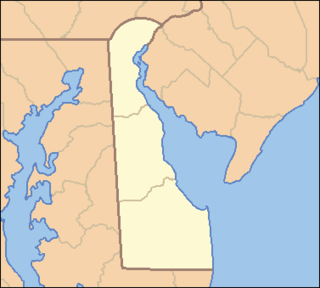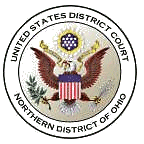Related Research Articles

Her Majesty's High Court of Chivalry is a civil law court in English and Welsh law with jurisdiction over matters of heraldry. The court has been in existence since the fourteenth century; however, it rarely sits. The sole judge is now the hereditary Earl Marshal of England, the Duke of Norfolk, though if not a professional lawyer, he normally appoints a professional lawyer as his lieutenant or surrogate.

In law, the bar is the legal profession as an institution, which originates from the phrase 'passing the Bar.' The term is a metonym for the line that separates the parts of a courtroom reserved for spectators and those reserved for participants in a trial such as lawyers.

The Crown Court of England and Wales is, together with the High Court of Justice and the Court of Appeal, one of the constituent parts of the Senior Courts of England and Wales. It is the highest court of first instance in criminal cases; however, for some purposes the Crown Court is hierarchically subordinate to the High Court and its Divisional Courts.
Patent infringement is the commission of a prohibited act with respect to a patented invention without permission from the patent holder. Permission may typically be granted in the form of a license. The definition of patent infringement may vary by jurisdiction, but it typically includes using or selling the patented invention. In many countries, a use is required to be commercial to constitute patent infringement.

The United States District Court for the District of Delaware is the Federal district court having jurisdiction over the entire state of Delaware. The Court sits in Wilmington. Currently, four district judges and five magistrate judges preside over the court.
The United States District Court for the Northern District of Georgia is a United States District Court which serves the residents of forty-six counties. These are divided up into four divisions.
Diamond v. Chakrabarty, 447 U.S. 303 (1980), was a United States Supreme Court case dealing with whether living organisms can be patented. Writing for a five-justice majority, Chief Justice Warren E. Burger held that human-made bacterium could be patented under the patent laws of the United States because such an invention constituted a "manufacture" or "composition of matter". Justice William J. Brennan Jr., along with Justices Byron White, Thurgood Marshall, and Lewis F. Powell Jr., dissented from the Court's ruling, arguing that because Congress had not expressly authorized the patenting of biological organisms, the Court should not extend patent law to cover them.

The U.S. District Court for the Northern District of Ohio is the federal trial court for the northern half of Ohio–essentially everything north of the Columbus area. The court has courthouses in Cleveland, Toledo, Akron and Youngstown.

The United States District Court for the Southern District of Ohio is one of two United States district courts in Ohio and includes forty-eight of the state's eighty-eight counties–everything from the Columbus area southward. Appeals from the court are taken to the United States Court of Appeals for the Sixth Circuit at Cincinnati.

The United States District Court for the Eastern District of Texas is a federal court in the Fifth Circuit.
In the legal system of Courts of England and Wales, the Intellectual Property Enterprise Court in London is an alternative venue to the High Court for bringing legal actions involving intellectual property matters such as patents, registered designs, trade marks, unregistered design rights and copyright. Hearings are usually conducted in the Thomas More Building at the Royal Courts of Justice site in the Strand, or at the Rolls Building in Fetter Lane.
Illinois Tool Works Inc. v. Independent Ink, Inc., 547 U.S. 28 (2006), was a case decided by the Supreme Court of the United States involving the application of U.S. antitrust law to "tying" arrangements of patented products. The Court ruled unanimously that there is not a presumption of market power under the Sherman Antitrust Act when the sale of a patented product is conditioned on the sale of a second product in a tying arrangement. A plaintiff alleging an antitrust violation must instead establish the defendant's market power in the patented product through evidence.
The United States District Court for the Northern District of Mississippi is a federal court in the Fifth Circuit with facilities in Aberdeen, Greenville, and Oxford.
LabCorp v. Metabolite, Inc., 548 U.S. 124 (2006), is the first case since Diamond v. Chakrabarty in which the U.S. Supreme Court indicated a renewed interest in examining the limits of patentable subject matter for advances in life sciences. Although the Court initially agreed to hear the case, it was later dismissed in 2006 with three Justices dissenting. The defendant's petition to the Supreme Court raised an issue not addressed in opinions from the lower courts: the claim at issue was directed to patent ineligible subject matter and therefore invalid.
The history of United States patent law started even before the U.S. Constitution was adopted, with some state-specific patent laws. The history spans over more than three centuries.

The courts of assize, or assizes, were periodic courts held around England and Wales until 1972, when together with the quarter sessions they were abolished by the Courts Act 1971 and replaced by a single permanent Crown Court. The assizes exercised both civil and criminal jurisdiction, though most of their work was on the criminal side. The assizes heard the most serious cases, which were committed to it by the quarter sessions, while the more minor offences were dealt with summarily by justices of the peace in petty sessions.
Patent law in modern mainland China began with the promulgation of the Patent Law of the People's Republic of China, in 1984. In 1985, China acceded to the Paris Convention for the Protection of Industrial Property, followed by the Patent Cooperation Treaty in 1994. When China joined the World Trade Organization (WTO) in 2001, it became a member of the TRIPS agreement.
Association for Molecular Pathology v. Myriad Genetics, Inc., 569 U.S. 576 (2013), was a case challenging the validity of gene patents in the United States, specifically challenging certain claims in issued patents owned or controlled by Myriad Genetics that cover isolated DNA sequences, methods to diagnose propensity to cancer by looking for mutated DNA sequences, and methods to identify drugs using isolated DNA sequences. Prior to the case, the U.S. Patent Office accepted patents on isolated DNA sequences as a composition of matter. Diagnostic claims were already under question through the Supreme Court's prior holdings in Bilski v. Kappos and Mayo v. Prometheus. Drug screening claims were not seriously questioned prior to this case.
TC Heartland LLC v. Kraft Foods Group Brands LLC, 581 U.S. ___ (2017), was a United States Supreme Court case concerning the venue in patent infringement lawsuits.
Peter v. NantKwest Inc., 589 U.S. ___ (2019), was a United States Supreme Court case from the October 2019 term.
References
- ↑ Martin Partington, Introduction to the English Legal System 2012-23 (6th edn, Oxford, Oxford University Press, 2011) p.223